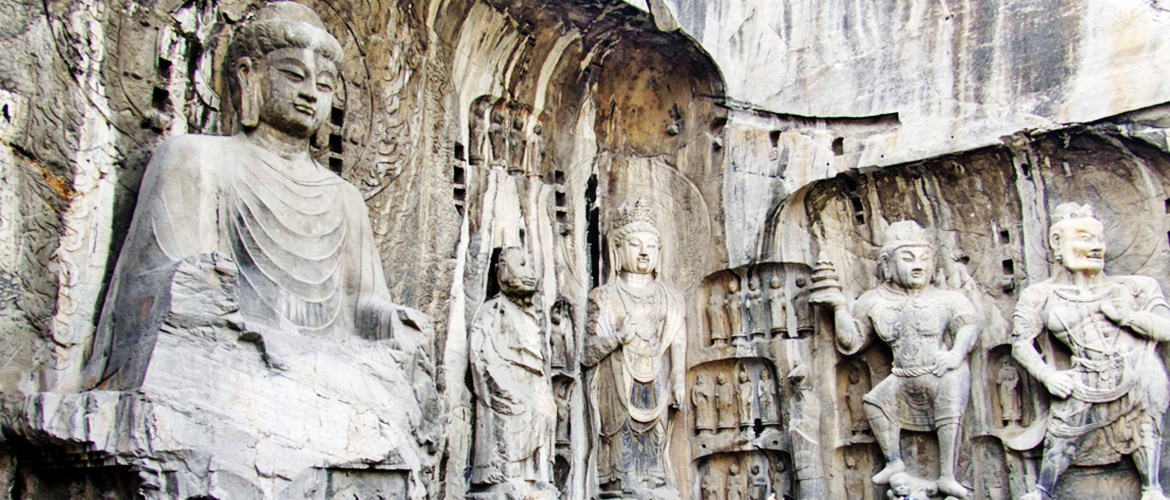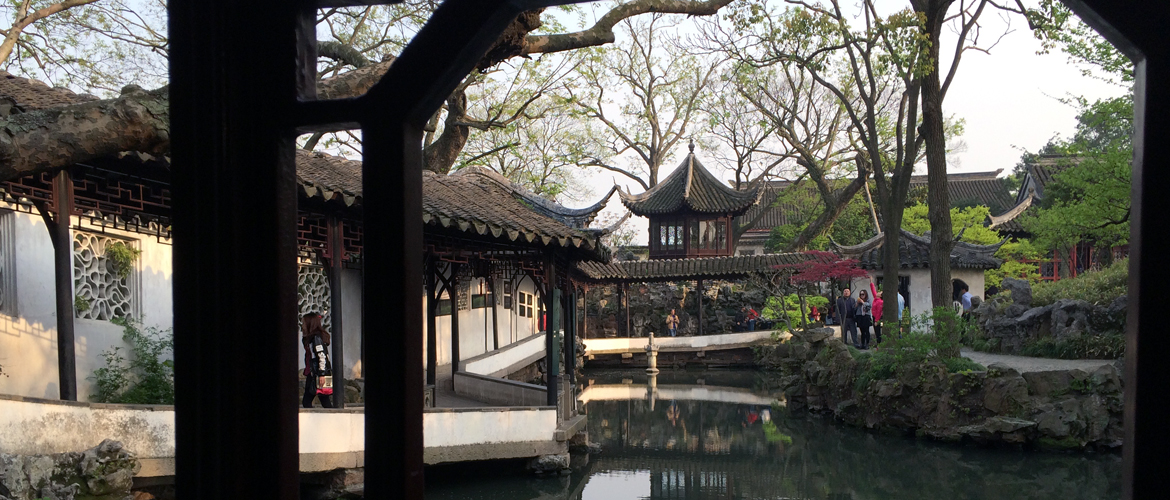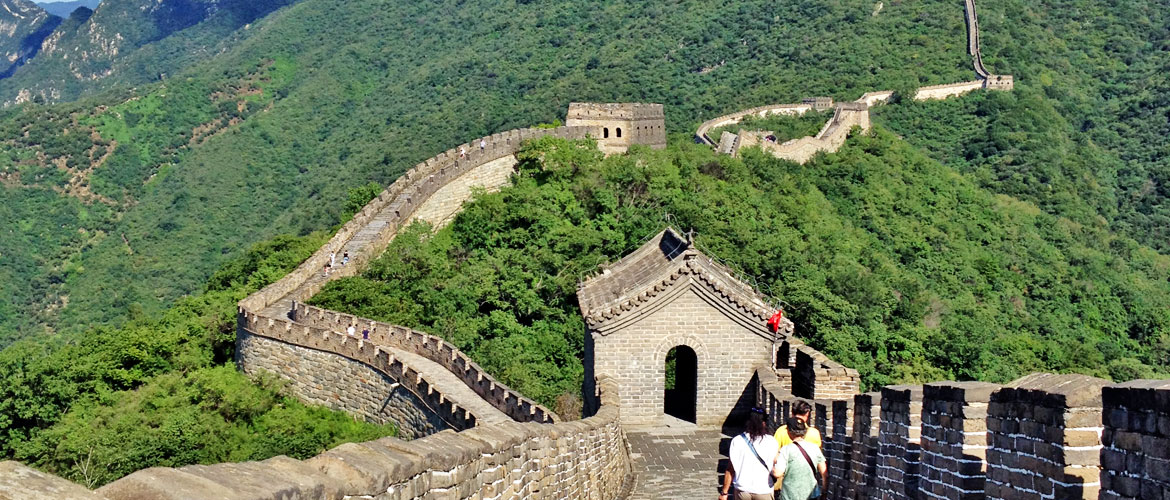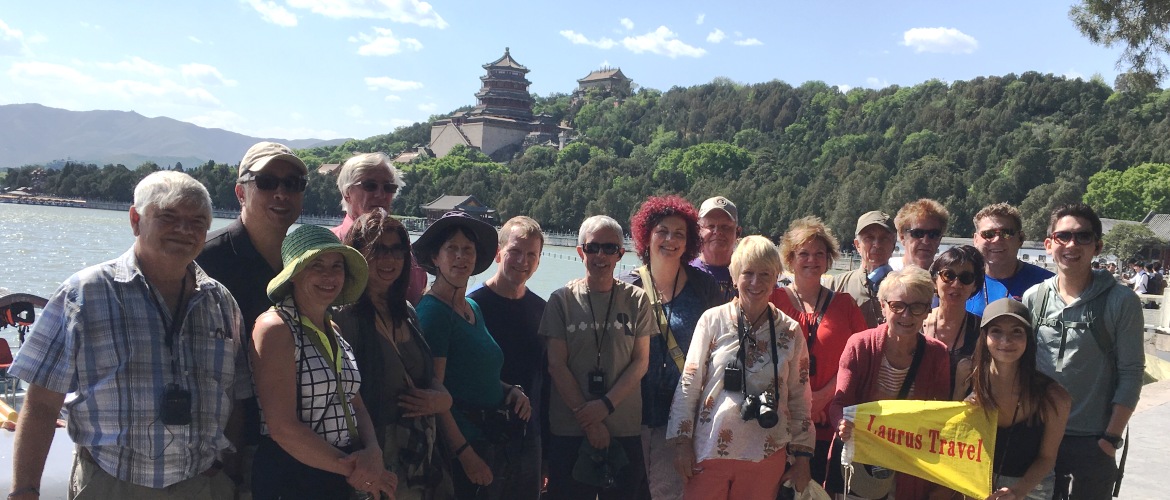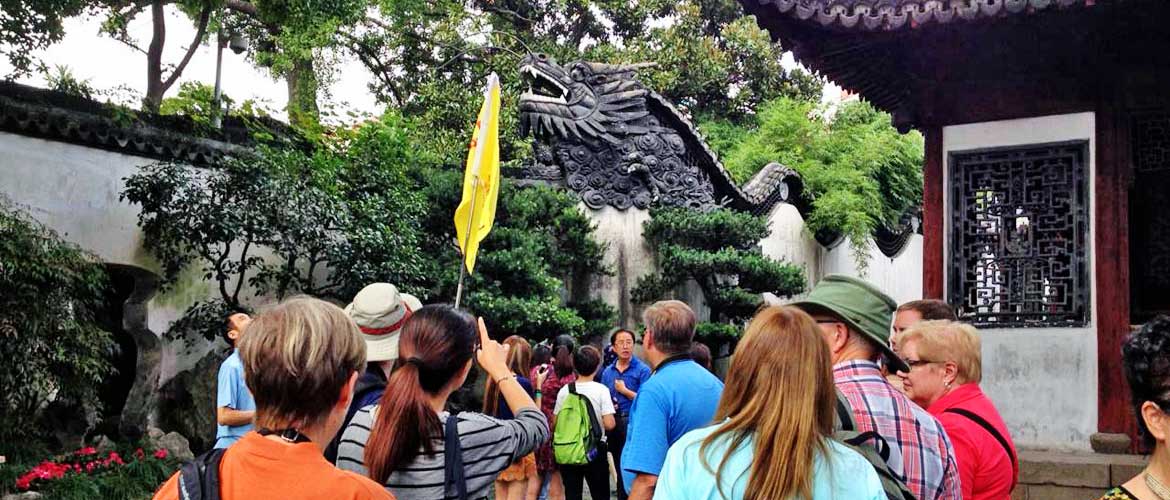Shanghai – Suzhou – Tongli (water town) – Luoyang – Beijing
Step into a world where timeless landscapes unfold like living works of art. Traverse the classical beauty of the Humble Administrator’s Garden in Suzhou, wander through the historic Yu Garden in Shanghai, and marvel at the imperial grandeur of the Summer Palace in Beijing. Each garden is a testament to centuries of craftsmanship, offering a glimpse into China’s rich cultural tapestry.
From the meticulously manicured landscapes of traditional gardens to the modern botanical wonders, our tour takes you on a journey through China’s diverse horticultural treasures. Experience the vibrant energy of city parks, where the urban landscape seamlessly integrates with lush greenery, creating serene oases amidst the bustling metropolises.
On top of all that, you’ll get to walk on the legendary Great Wall and savour a delicious Beijing roast duck dinner.
This premium China garden tour combines some of China’s top UNESCO World Heritage Sites with special garden visits. History, culture, gardens, gourmet food, silk, tea and high-speed train – these are the main ingredients of this masterfully crafted itinerary. Extensions to Xi’an and Guilin can be easily arranged on request.
Important Features
- Small group size (average 15, maximum 20).
- Expert local guides.
- Inter-city travel by bullet train (first class).
- No forced shopping stops.
- Quality meals at non-tourist restaurants.
- Free Wi-Fi in all hotels.
- Great Wall visit at Mutianyu with cable car.
Meal Code: B = breakfast | L = lunch | D = dinner
Day 1/Thu: Departing for Shanghai
Depart from a city of your choice and lose a day upon crossing the International Date Line.
Day 2/Fri: Arrival in Shanghai
Meet the driver on arrival for transfer to the hotel. You’ll have the balance of the day at leisure. The guide will get in touch with you tonight.
Day 3/Sat: Shanghai (B/L/D)
With a population of 24 million (2015), Shanghai is China’s biggest city, which delights the visitor with its futuristic skyline and historical landmarks. Rapid economic growth in the past 30 years has again turned Shanghai into a leading global city with significant influence in commerce, culture, finance, media, fashion, technology and transport.
Following tour orientation we visit Jade Buddha Temple located in an old neighbourhood, the famous waterfront promenade known as the Bund, and the Yu Garden in the old town centre. We wrap up the day with a drive through the glitzy financial district of Lujiazui on the opposite side of the Bund across Huangpu River.
Day 4/Sun: Shanghai (B)
Free day to explore on your own. We recommend Shanghai Museum and the Urban Planning Exhibition Center nearby. Shanghai Museum, a great place to explore on your own (audio guide available for a fee), is frequently cited by visitors as one of the best of its kind in China with a treasure trove collected from around the country.
Day 5/Mon: Shanghai – Suzhou (B/L)
After a leisurely breakfast we drive 85km to Suzhou. Ancient Suzhou is most famous for its gardens, canals and silk industry. In late 13th Century a Venetian named Marco Polo visited Suzhou and he was very impressed by what he saw. He vividly described the prosperous silk making trade and dubbed Suzhou Venice of the East due to the small waterways crisscrossing the city.
Our full-day schedule takes in historic Tiger Hill, Humble Administrator’s Garden, Suzhou Museum (designed by I. M. Pei), North Pagoda and a short canal cruise. Those interested in shopping can ask to be dropped off at the Silk Embroidery Research Institute or a filature (silk reeling mill) on the way back to the hotel.
Day 6/Tue: Suzhou – Tongli – Suzhou (B/L)
Morning excursion to Tongli – an ancient water town 25km south of Suzhou. Tongli is renowned for its canal system intersecting the town. After lunch we return to Suzhou and have the balance of the day at leisure.
Day 7/Wed: Suzhou – Luoyang (B/L/D)
This morning we board the bullet train (#G1974, 07:44/12:59) for Luoyang.
Afternoon sightseeing includes the magnificent Longmen Grottoes – a UNESCO World Heritage Site. Located 12 km south of the city centre, the historical site contains as many as 100,000 Buddhist statues ranging from 1 inch to 57 feet in height. Dating back as far as 493 A.D, these ancient sculptures carved out of cliffs on both sides of the Yi River are some of the finest examples of Chinese Buddhist art.
Day 8/Thu: Luoyang (B/L)
Morning sightseeing includes White Horse Temple (oldest Buddhist monastery in China) and the Peony Garden across from the monastery – the site of the annual peony festival held between early April and early May. Afternoon is at leisure.
Day 9/Fri: Luoyang – Beijing (B/L)
We spend the morning exploring the ancient city on our own.
Optional excursion to Xi’an by bullet train (2 hours) to visit the world-famous Terracotta Army can be arranged on request. With a history going back over 3,000 years, Xi’an served as China’s capital of several ruling dynasties including the Han (206 BC – 220 AD) and the Tang (618 – 907). It is home of the famous Terracotta Army and the eastern terminus of the ancient Silk Road – a network of trade routes connecting China proper with regions as far as the Mediterranean beginning in the Second Century BC.
After lunch we ride the bullet train to Beijing (4 hours) and transfer to the hotel on arrival.
Capital of China, Beijing is a world-class cultural and educational centre with a population of 21.7 million (early 2017), ranking it China’s second biggest city behind Shanghai. Beijing is renowned for its opulent palaces, temples, and huge stone walls and gates – treasures that make it the most popular tourist city in China by the number of visitors it receives every year.
Beijing was already a strategically important city in northern China for centuries when Kublai Khan (1215-1294) of the Yuan Dynasty (1271-1368) moved his capital here from Karakorum in Mongolia. With the collapse of the vast Mongol empire in 1368, Beijing, known as Da Du or Grand Capital at the time, lost its status as the country’s capital. But the city regained its capital status in 1420 when the imperial court of the successive Ming Dynasty relocated to Beijing from Nanjing. Beijing continued to serve as China’s capital after Manchu tribes dethroned the last emperor of the Ming Dynasty in 1644 and established the Great Qing Empire (Qing Dynasty), which lasted till 1912.
Day 10/Sat: Beijing (B/L/D)
We begin today with a visit to the Forbidden City. Officially known as the Palace Museum, the Forbidden City was the place where the emperors of Ming (1368-1644) and Qing (1644-1912) Dynasties lived and carried out their administration. Construction of the Forbidden City took 14 years (1406-1420) to complete. The complex consists of 980 buildings and covers 72 hectares or 180 acres. The Qing Dynasty was overthrown in 1912 but the royal family was allowed to continue to live in the Forbidden City till 1924, when the last emperor, Pu Yi, was driven out of the imperial palace. Declared a World Heritage Site by UNESCO in 1987, this is the largest collection of preserved ancient wooden structures in the world.
Next up is Tian’anmen Square. Located in the heart of Beijing, the square measures 880 metres from north to south and 500 meters from east to west. Said to be the largest public plaza in the world, Tian’anmen Square has the capacity to hold one million people. The imposing Tian’anmen Tower sits at the north end of the square while the Monument to the People’s Heroes dominates the centre. The square is flanked by The Great Hall of the People (west) and the National Museum (east). Chairman Mao’s Mausoleum and Qianmen (Front Gate) are located in the south of the square. One of the top 16 tourist attractions in Beijing, Tian’anmen Square is also the witness of the Chinese people’s great struggles for democracy and personal freedom since 1919.
Afternoon sightseeing at the Temple of Heaven, another UNESCO World Heritage Site. Situated in southeastern Beijing the Temple of Heaven is China’s largest extant sacrificial temple where, during the Ming and Qing Dynasties, the emperors conducted the elaborate and most exalted sacrifices addressed to “the Supreme Ruler of the Universe.” Construction of the temple started in 1406, during the reign of the Ming Emperor Yongle, and took 14 years to complete. The temple was expanded under the Qing emperors Qianlong (1736-1796) and Jiaqing (1796-1820). Occupying 2.73 square kilometres (roughly 1,700 by 1,600 metres), the area of the Temple of Heaven is more than twice that of the Forbidden City.
The famous Hongqiao Pearl Market, the largest pearl market in the world, is right across the street from the Temple of Heaven. Recommended by numerous guidebooks for freshwater pearls, Hongqiao teems with domestic and international shoppers. If you are interested, please ask the guide to drop you off there. However, you’ll need to get back to the hotel by taxi, which costs about 50 yuan or US$8.
Today we enjoy a delicious dinner at a popular Peking Roast Duck restaurant. Peking Roast Duck is a famous Beijing dish prized for the thin and crispy skin with authentic versions serving mostly the skin and little meat, sliced in front of the diners. The meat is wrapped in a thin layer of pancake (Chinese tortilla) together with shredded scallion, cucumber, and a sweet and salty sauce made of wheat flour. Condiments may also include pickled garlic and white sugar.
Day 11/Sun: Beijing (B/L)
After an early breakfast we embark on a full-day excursion to the legendary Great Wall at Mutianyu, 75km northeast of the city.
Zigzagging over 6,000 kilometres from east to west along undulating mountains, the Great Wall was built to hold off tribal invaders from the north. As history shows, the Wall failed the Chinese rulers miserably, especially in the case of Kublai Khan whose cavalrymen swept across China from the Mongolian steppe, thus the beginning of the Yuan Dynasty (1279-1368).
Construction of the earliest sections of the Wall started in the 7th century B.C. A major renovation started with the founding of the Ming Dynasty in 1368 and took 200 years to complete. The wall we see today in Beijing is almost exactly the result of this effort.
Day 12/Mon: Beijing (B/L)
We begin our sightseeing today with a visit to a traditional hutong neighbourhood. Hutong refers to an ancient alleyway with siheyuan or ”4-sided courtyard house” on both sides. The name hutong dates back to the Yuan Dynasty (1279 – 1368). According to some experts, the word originated from the Mongolian language, in which it is pronounced as hottog and means “well.” In ancient times, people tended to gather and live around wells. So the original meaning of hutong should be “a place where people live around”.
Next on our schedule is the Summer Palace, a well preserved UNESCO World Cultural Heritage Site. The imperial resort was first named Garden of Clear Ripples, which was burnt down by the allied forces of Great Britain and France in 1860 at the end of the Second Opium War (referred to as Arrow War by the British). Reconstruction started 25 years later and was completed in 1895 when the name was changed to Yi He Yuan (Garden of Good Health and Harmony). The design gives prominence to Longevity Hill, and Kunming Lake south of the hill. The sprawling complex covers an area of 290 hectares and the buildings inside consist of over 3,000 bays.
After lunch we spend the balance of the day exploring on our own.
Day 13/Tue: Returning Home (B)
The tour ends this morning. Transfer to the airport for return home flight. Guests returning to North America will regain a day upon crossing the International Date Line.
| City | Nights | Hotel | Hotel Category |
| Shanghai | 3 | Amara Signature | 5 stars / luxury |
| Suzhou | 2 | Pan Pacific Suzhou | 5 stars / luxury |
| Luoyang | 2 | Lee Royal Hotel Mudu | 5 stars / luxury |
| Beijing | 4 | Sheraton Grand Beijing Dongcheng | 5 stars / luxury |
Dates and Prices
discount available
Prices are based on double occupancy. See Terms & Conditions for cancellation penalty.
| Depart (Thu) |
Return (Tue) |
Land Only* CA$/US$ |
Single Supplement CA$/US$ |
| 2024 | |||
| 04-Apr | 16-Apr | $3999/$2,975 | $1,150/$850 |
| 11-Apr | 23-Apr | $3999/$2,975 | $1,150/$850 |
| 18-Apr | 30-Apr | $3999/$2,975 | $1,150/$850 |
| 02-May | 14-May | $3999/$2,975 | $1,150/$850 |
| 09-May | 21-May | $3999/$2,975 | $1,150/$850 |
| 16-May | 28-May | $3999/$2,975 | $1,150/$850 |
| 23-May | 04-Jun | $3999/$2,975 | $1,150/$850 |
| 30-May | 11-Jun | $3999/$2,975 | $1,150/$850 |
| 06-Jun | 18-Jun | $3999/$2,975 | $1,150/$850 |
| 13-Jun | 25-Jun | $3999/$2,975 | $1,150/$850 |
| 20-Jun | 02-Jul | $3999/$2,975 | $1,150/$850 |
| 15-Aug | 27-Aug | $3999/$2,975 | $1,150/$850 |
| 22-Aug | 03-Sep | $3999/$2,975 | $1,150/$850 |
| 29-Aug | 10-Sep | $3999/$2,975 | $1,150/$850 |
| 05-Sep | 17-Sep | $3999/$2,975 | $1,150/$850 |
| 12-Sep | 24-Sep | $3999/$2,975 | $1,150/$850 |
| 19-Sep | 01-Oct | $3999/$2,975 | $1,150/$850 |
| 03-Oct | 15-Oct | $3999/$2,975 | $1,150/$850 |
| 10-Oct | 22-Oct | $3999/$2,975 | $1,150/$850 |
| 17-Oct | 29-Oct | $3999/$2,975 | $1,150/$850 |
| 24-Oct | 05-Nov | $3999/$2,975 | $1,150/$850 |
| 31-Oct | 12-Nov | $3999/$2,975 | $1,150/$850 |
| 07-Nov | 19-Nov | $3999/$2,975 | $1,150/$850 |
| 14-Nov | 26-Nov | $3999/$2,975 | $1,150/$850 |
* Land Only price excludes international airfare. Please contact us for a fare quote.
|
What the tour price includes:
|
What the tour price excludes:
See Terms & Conditions for more information. |
